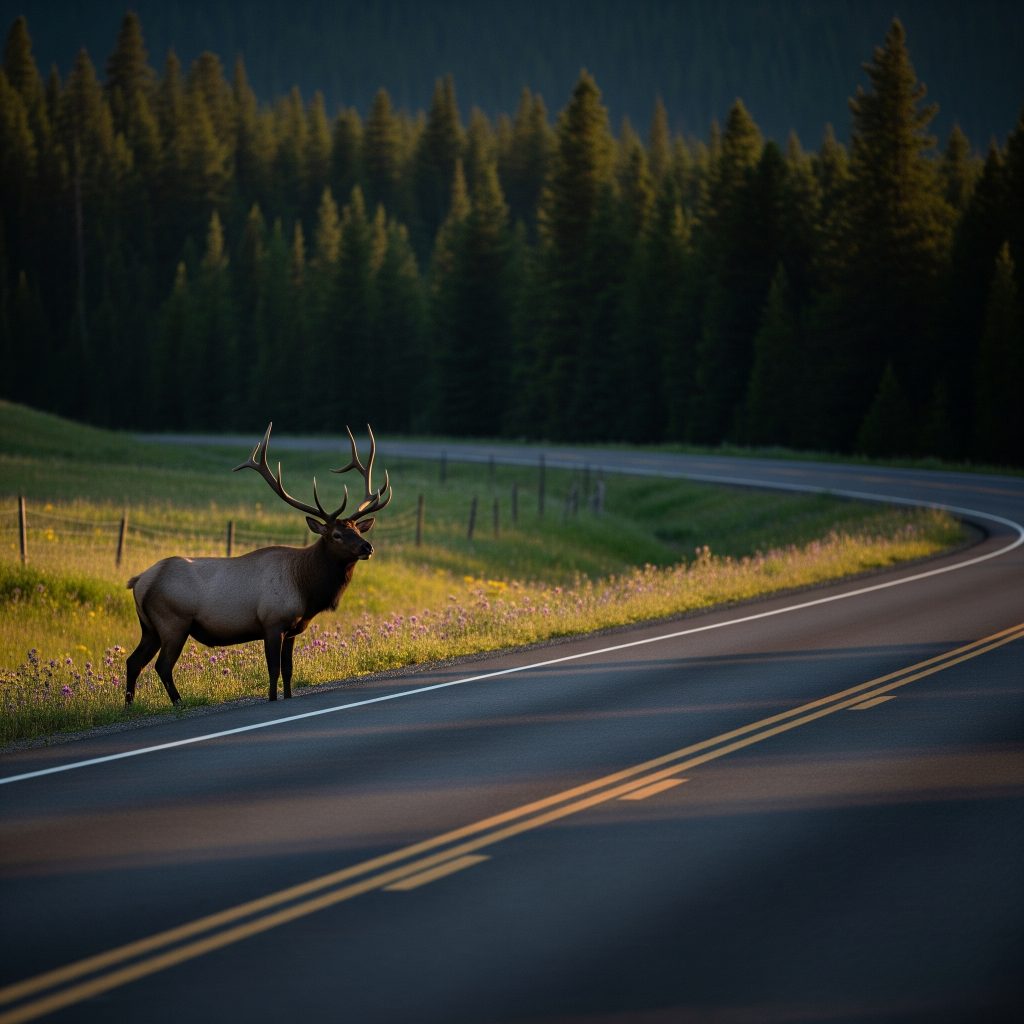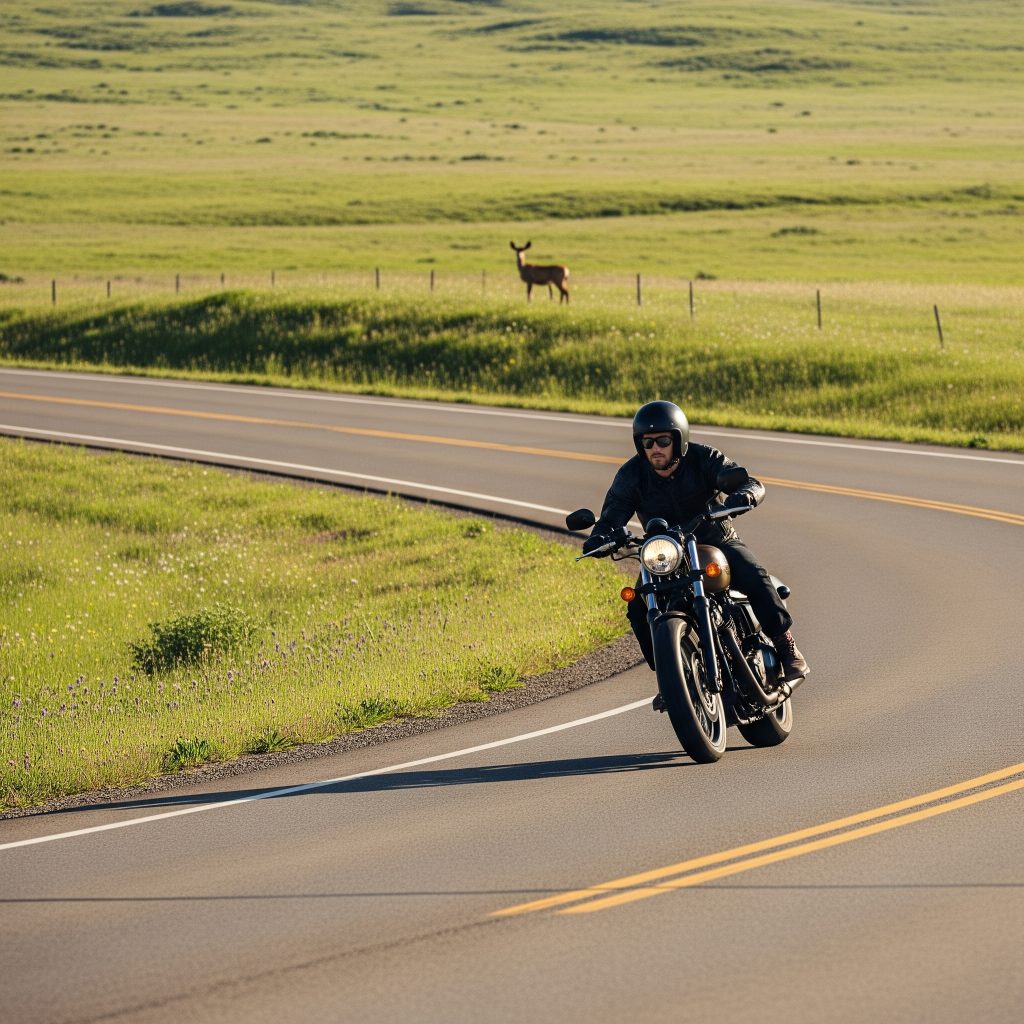Wildlife collisions are surging across Montana, creating deadly risks for drivers and motorcyclists alike. Here’s how our community can stay safe and work together to prevent more tragedies.
Montana has always been home to breathtaking landscapes, wide‑open roads, and a deep connection between people and nature. But lately, a growing danger is putting our community on high alert: a sharp rise in animal‑related crashes on our highways and backroads.
Recent reports show Montana ranks #1 in the nation for fatal animal collisions, with accidents involving deer, elk, bears, and other wildlife tragically on the rise. This isn’t just a statistic—it’s something many of us are feeling close to home. Families have lost loved ones. Riders have been seriously injured. And it’s happening more often, especially during the busy summer months when wildlife movement and road travel are both at their peak.
According to Montana Right Now, animal collisions in Montana have climbed higher than almost anywhere else in the country. Add in information from Montana Talks and NewsTalk KGVO, and a clear picture emerges: drivers and riders alike are facing new risks every single day.
A New Push for Safety
Just this week, Montana Free Press highlighted landmark wildlife crossing legislation designed to reduce collisions and protect both motorists and animals. Overpasses, fencing, and better signage are all part of a long-term effort—but these solutions will take time to implement.
In the meantime, we all have a role to play. For riders, a wildlife encounter can be especially devastating. Unlike drivers in enclosed vehicles, motorcyclists have little protection when an animal darts across the road. Deer are the most common hazard, but bears, elk, and even smaller animals can cause a rider to lose control.
Why Wildlife Collisions Are So Common in Montana
Montana’s natural beauty is also what makes it unpredictable. Our state is home to some of the largest populations of deer, elk, and moose in the country. Winding highways cut through open rangelands, forested regions, and migration corridors. Historically, this has always been part of life here—many long‑time residents can recall stories of near misses or close calls decades ago.
What’s different today is the sheer volume of traffic and the pace of growth. As more people explore our scenic roads, especially during tourist season, the chances of meeting wildlife on the move only increase. Combine that with record droughts in some areas and changing food patterns that draw animals closer to highways, and you’ve got a recipe for the kind of spike we’re seeing now.
Local wildlife officials note that summer and early fall are especially dangerous. That’s when young animals begin to wander farther, and when roads are busiest with riders, vacationers, and agricultural traffic.

Tips to Stay Safe This Summer
Whether you’re riding two wheels or four, here are ways to reduce your risk and help protect our community:
- Stay extra alert at dawn and dusk. Wildlife is most active during these hours. Slow down in known high‑risk areas.
- Watch for animal crossing signs. They’re placed in areas with a history of collisions. Take them seriously.
- Ride with high beams when safe. Greater visibility can give you precious seconds to react.
- Scan both sides of the road. Animals rarely travel alone—if you see one, others may follow.
- Avoid swerving. In many cases, hitting the brakes firmly and keeping control is safer than swerving into oncoming lanes or off-road hazards.
- Gear up every time. Full protective gear, including a DOT‑approved helmet, can be life‑saving in a collision.
Additional Rider‑Specific Strategies
Motorcyclists face unique challenges when it comes to wildlife hazards. Here are a few extra tactics to keep in mind when you’re on two wheels:
- Ride with a buffer zone. On highways, maintain more distance than usual between yourself and the vehicle in front of you. This gives you time to see animals the car ahead might flush out.
- Consider group riding formations. If you ride with others, stagger your formation so everyone has room to react. A tight single‑file group can increase risk if someone ahead brakes suddenly.
- Practice controlled emergency braking. In a safe environment, practice quick stops so your reflexes are sharp when something unexpected runs into your path.
- Stay mentally present. Long stretches of rural highway can lull riders into autopilot. Shift your seating position, scan actively, and take short breaks to stay sharp.
- Avoid riding at high speeds in known wildlife corridors. A few extra minutes on your trip are worth your life—and the lives of those you ride with.

Coming Together as a Community
As Montanans, we take pride in looking out for each other. Share these safety tips with fellow riders and drivers. If you’ve had a close call or know an area with heavy wildlife movement, speak up—post about it in local forums, mention it in rider groups, or alert your county transportation office.
Local organizations are also working hard to raise awareness. At the Montana Motorcycle Safety Foundation, we’re committed to educating riders and helping create safer roads for everyone. By staying informed and working together, we can reduce these tragedies and protect the open roads we all love.
Resources to Learn More and Get Involved:
- Montana Wildlife Collision Reports
- Montana Free Press: Wildlife Crossing Laws
- Motorcycle Safety Foundation Rider Resources
Montana is our home, and these roads connect us all. Let’s ride safe, drive safe, and keep looking out for each other.
How You Can Help Advocate for Safer Roads
It’s not just about riding carefully—it’s about shaping a safer future for everyone. Local advocacy groups and state agencies are already working on better fencing, wildlife crossings, and public education campaigns, but they need community voices behind them.
Here are a few ways you can help:
- Report collision hotspots. If you know of an area with frequent animal sightings or crashes, report it to your county’s transportation department or Montana Fish, Wildlife & Parks.
- Attend community meetings. Many local safety boards welcome public input. Your firsthand experience as a rider can shape decisions.
- Share your stories. Whether it’s in a Facebook group, at a local bike night, or in a letter to your local newspaper, personal stories remind others to slow down and stay alert.
- Support wildlife initiatives. Donate to or volunteer with local groups working on habitat protection and safe crossings. Every little bit helps.
Ready to ride with confidence?
Explore more safety tips and rider training opportunities today.

